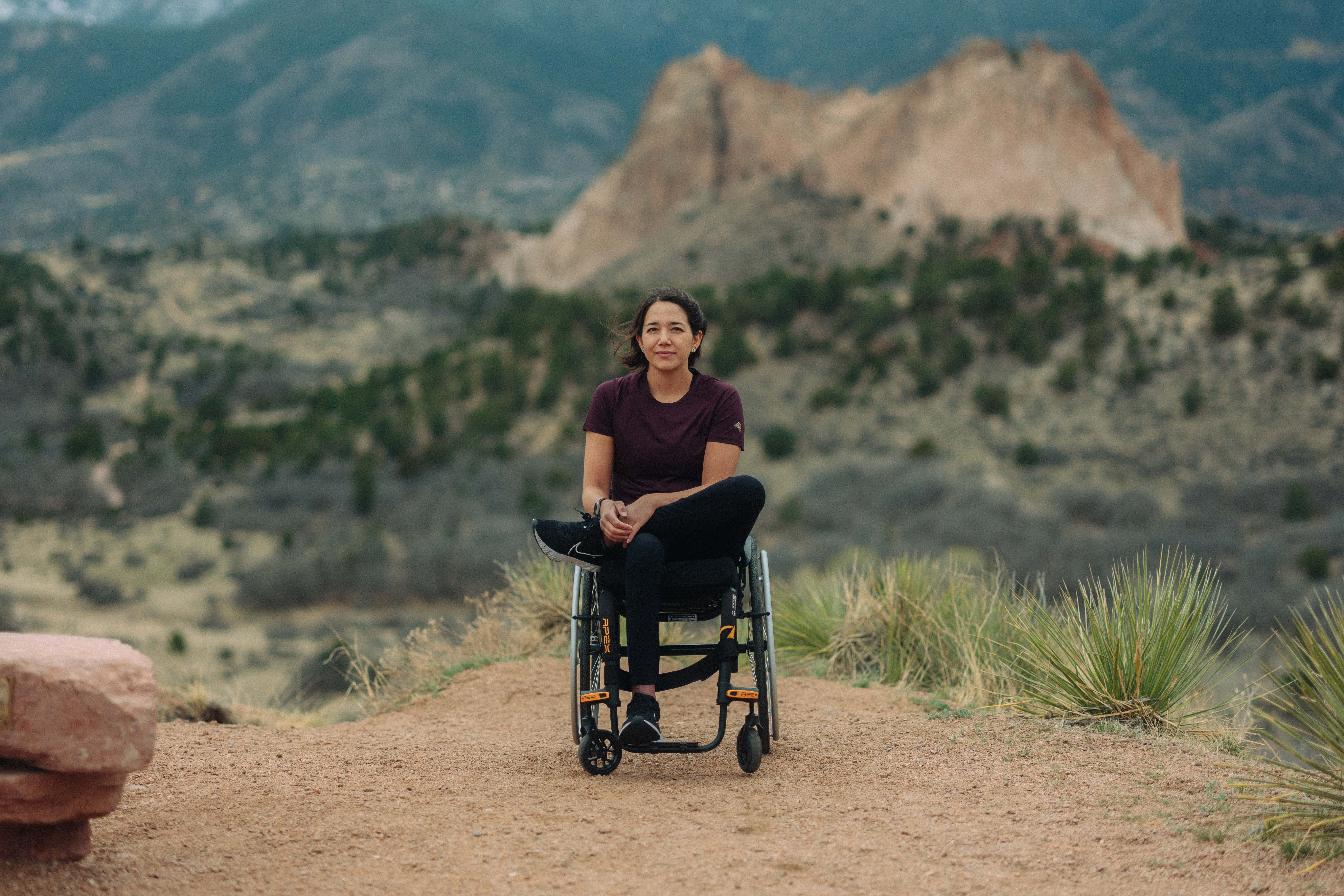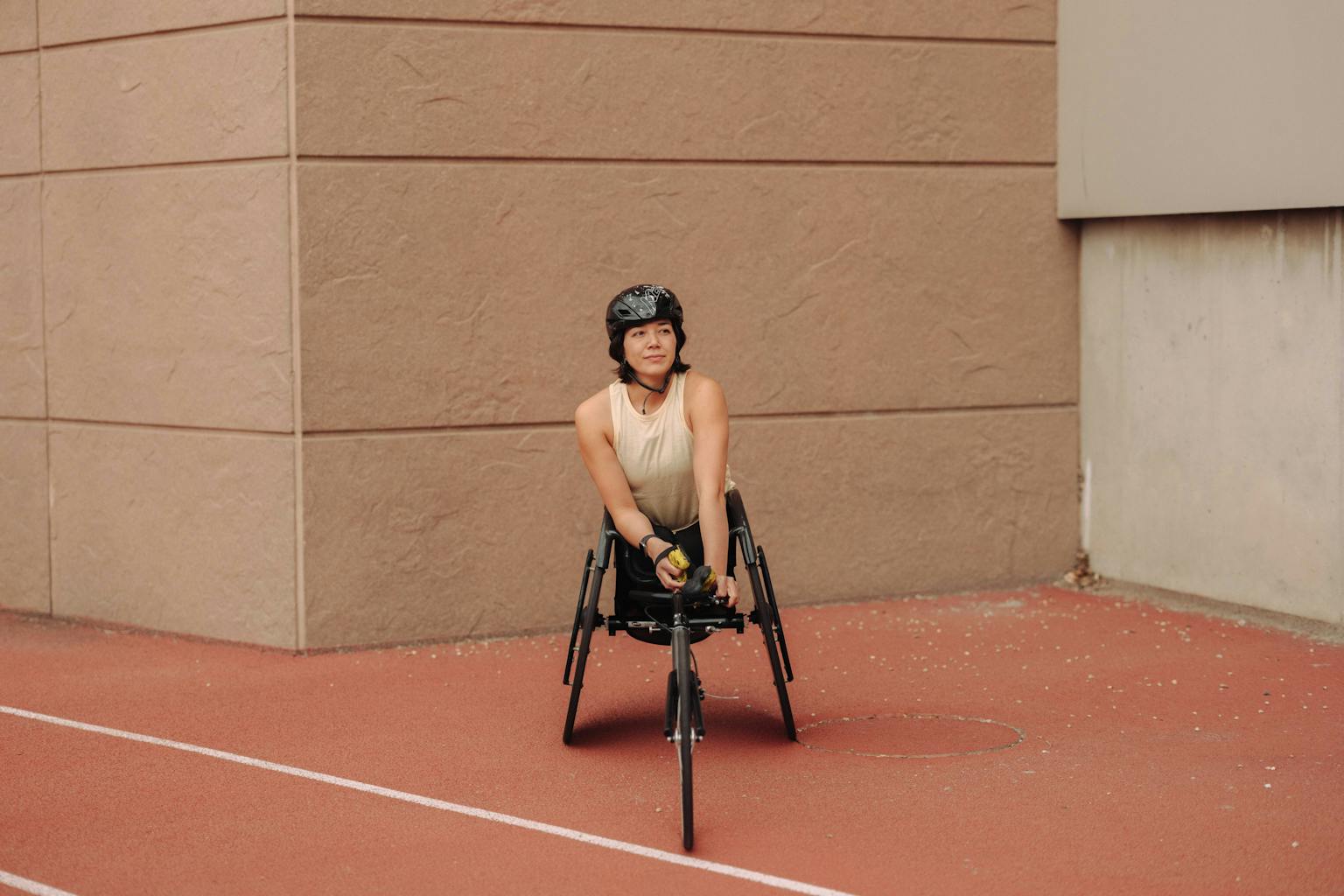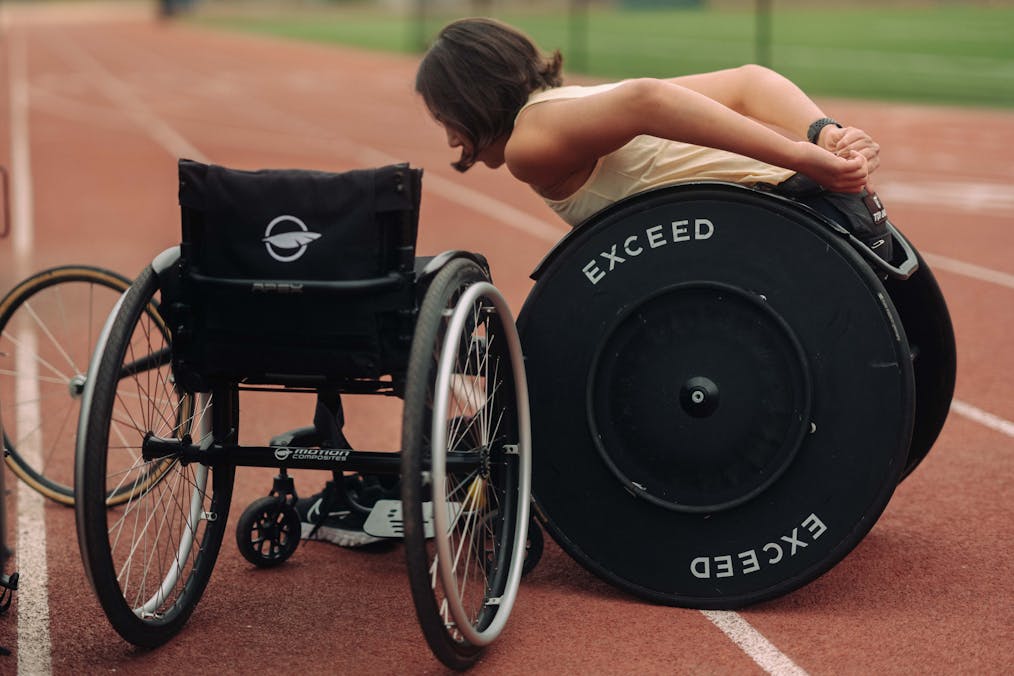
“Oh, so you want to be fast?”
Emi Perry’s Rise to Elite Sport
Words by Emma Zimmerman
Photography by Sean Greene
In 2017, Emi Perry waited at the start-line of her first wheelchair race, awash in skepticism. Just five months had passed since her spinal cord injury, and Perry still dreamed of running again. That race, a five-miler in Philly, was somewhat of a trial run – “a good experience,” Perry thought. In the end, she finished far behind the two other wheelchair athletes but appreciated the camaraderie of the crowd, and moved on. It took until 2020 for the sport to grow into much more than a good experience. During the pandemic, Perry began training harder, picking up skills and speed. In 2022, she entered her first paratriathlon. And in 2023, she obtained a sponsorship.
This March, the now 30-year-old prepares to leave her Philadelphia residence and relocate to Colorado Springs to train full-time for the paratriathlon, at the Olympic and Paralympic Training center. Such a rapid rise to professional sport might appear impossible to many athletes. But excellence is sewn into the fabric of who Perry is, woven tight with a commitment to building community through sport. We spoke with Perry about what being an adaptive athlete means to her, her mindset and goals this season.
How did you find that community?
It came down to showing up at different races. There are only a couple of major races that support the wheelchair division very well, so all the wheelchair people seem to show up at the same races. You get to know each other. I think that’s the main difference between running and wheelchair racing.
Last August you were the first wheelchair athlete to compete in the Tracksmith Twilight 5,000 series. What did that experience mean to you?
It’s always nice to have a race director who is open to someone racing in a wheelchair. Because I used to be a runner, I would rather runners and wheelchair athletes race together, rather than on separate tracks. It makes it more inclusive. So, it was cool to race with all the runners, even though [laughs] the race didn’t go too well for me.
I read that you competed in five races in five weeks.
[Laughs] I think that was maybe a little too much!
Tell us about the roots of that mindset. You’re not just thinking, “I want to race and see how fast I can be,” but “I want to compete in as many races as I can.” Why this extra challenge?
I had this mindset of – I need to [compete] now, because I never know when I won’t be able to again. I had a lot of running goals that I couldn’t hit when I got injured. Then Covid hit, and no one was competing. I’m also an indecisive person. I couldn’t decide which races to do!
What inspired the switch to triathlon?
I had a really hard time deciding if I wanted to focus on wheelchair racing or triathlon. I did my first tri last year, and I really liked it, even though it’s stressful to travel with both the handcycle and the race chair.
I applied to the [Paralympic] resident program at the beginning of December, and two weeks later, they gave me a spot. I guess it was decided for me! Also, I train by myself, and it’s harder to push yourself alone. I missed the team aspect. At the training center, there’s in-person coaching, and all these fast people are there to focus on triathlon.
Are there any changes you wish to see in the running industry when it comes to access and equity for adaptive athletes?
I do wish there were more options for wheelchair people. And that we could know which races are accommodating. If you’re a runner, you can just do a local 5k. Wheelchair racers have to ask: Will they accommodate me? Will they let me start first? Is there a tight turn that’s going to be hard for me to make? If it’s a point-to-point, will they bring my day chair from the start to the finish? There’s a lot more to think through.
When you envision yourself five years in the future, where do you want to be – in racing or otherwise?
It would be great if I could still be training full-time. I also want to help the adaptive sports community grow. I think there are still a lot of people who don’t know about adaptive sports. When I’m on the Schuylkill trail, people stare at me, because it’s so different from what they’re used to.
I think calling it an “adaptive sport” makes it a bit lesser than other sports. I’d like for wheelchair racing and handcycle to be seen as just another way to exercise.





